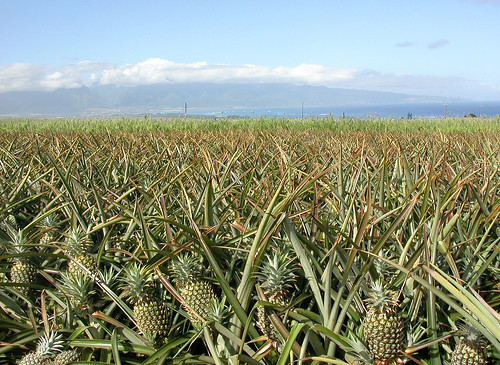
Whether eaten sliced or as a pizza topping, pineapple is a delicious and versatile tropical fruit that ranks third in worldwide popularity behind the banana and mango.
In the late 19th century, Hawaii led in the production and export of canned pineapple, thanks to an industry built around key advances in processing technology and plantings of Smooth Cayenne, a variety well suited to the state’s soils and growing conditions.
Hawaii no longer holds that title. However, it remains home to one of the world’s largest and most genetically diverse pineapple collections. The collection is managed by USDA’s Agricultural Research Service (ARS) on 33 acres of land in Hilo as part of the agency’s National Clonal Germplasm Repository for Tropical Fruit and Nut Crops.
The ARS collection represents a treasure of genetic resources for identifying and improving important traits in commercial pineapples as well as for research to understand the basic biology and evolution of different plant processes.
Big-name as well as little-known pineapple accessions alike are kept there. Some, like Smooth Cayenne, are industry leaders, prized for their fresh fruit or canning quality. Others, like Saigon Red, are more obscure though no less worth preserving.
A miniature pineapple brought to Hawaii from Vietnam in 1938, Saigon Red is too tart to eat. However, its compact size, red-skinned fruit and long, shapely leaves could prove ideal for landscape plantings or indoor use as a decorative plant.
Ensuring the good health and availability of the Hilo collection—which numbers 186 different kinds of wild and cultivated pineapple—can be labor-intensive; so, too, can cataloguing the plants and their traits. Now, new tools called “molecular markers” are helping to speed up the process—from 18 months to 2 years down to just a few days. The markers detect the gene or genes for specific traits in the pineapple’s DNA. This can be done with seedlings rather than full-grown plants, saving time, money and resources.
Just as canning refinements made Hawaii an early world leader in exports, so too is the state on the cusp of technology today to mine the fruit crop’s untapped genetic potential, with benefits to growers and consumers across the globe.
